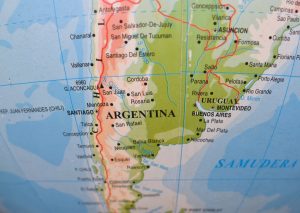Online Offshore Banking in Argentina – Full Guide10 min read
Reading Time: 4 minutesOffshore banking is an increasingly important tool in today’s global economy, for both individuals and companies who want to control their finances securely and privately.
Especially in Argentina, where the economy can be volatile and the local banking is not the easiest to manage, it’s wise to open an offshore bank account.
We’ll teach you how to set up your financial sanctuary in Argentina and specifically The Kingdom Bank — your digital bank of choice.
How to Open an Offshore Banking Account in Argentina?
A bank account offshore in Argentina is easy to open, but it’s not without a little preparation. But let’s take this one by one.
To begin with, do your homework on offshore banking options. You are seeking a bank that not only meets your financial needs, but is also reliable and open.
The Kingdom Bank, for example, operates both private and corporate banking services that are managed by the Financial Services Unit of the Commonwealth of Dominica.
- Gather Your Documents. Then you have to get the papers together. Here’s what you typically need:
- Identification: This may be your passport or national ID.
- Address Proof: You’ll just need recent utility bills or a lease.
- Income Certificates: You may require your payslips or bank accounts to prove your income.
- Tax ID: In Argentina this is called CUIL or CUIT.
Having these documents handy will make the entire process quicker and less time-consuming.
Schedule an Appointment. Once you have the paperwork in hand, call up your prospective bank. Most banks make it easy to open an overseas bank account from the comfort of your home, but sometimes a real meet and greet can help. Be prepared to take a few minutes with a bank agent either in person or over the internet for your appointment.
Select Your Account Type. During your call, you’ll go over the types of accounts we have. The Kingdom Bank offers solutions to meet all your banking needs, be it personal banking or a more professional approach.
Set your goals financially— the bank will guide you towards the best solution.
Complete the Application. Once you choose your account type, you’ll be required to fill out an application and sign some documents.
Read it carefully — nobody wants to be the person that gets a package they didn’t intend to get.
Fund Your Account. Most banks will ask for an initial deposit in order to open an account. Make sure you have the money you need on hand. Once your account is open, it’s time to begin to use your offshore Argentina account.

Opening an Offshore Banking Account for Free in Argentina
Who doesn’t love the phrase “free”? Though most banks charge a fee for account maintenance, The Kingdom Bank offers options that allow you to keep an account open without paying high monthly fees.
Also, some accounts will charge you nothing for maintenance when you meet certain requirements such as a minimum balance. So pay attention to those details while selecting your account.
Can Anyone Open an Offshore Banking Account in Argentina?
Yes, you can open an offshore bank account in Argentina, both for natives and for expats. However, there are a few limitations:
- You’ll likely be asked for a local address, which might be covered by a rental contract or a utility bill.
- Banks can still ask you to come in person to open the account (The Kingdom Bank provides the service online).
- As long as you have all the paperwork in place, you are all set!
Individuals looking to protect their assets, expatriates wanting easier access to their funds, and businesses engaging in international trade can all benefit from an international bank account.
What are the Offshore Banking Regulations in Argentina?
Argentina also has specific offshore banking regulations in order to maintain compliance and transparency.
These laws are supervised by the Central Bank of Argentina (BCRA), which is dedicated to battling money laundering, tax evasion and other illegal financial activities.
Important rules to note:
- Anti-Money Laundering (AML): Banks should follow strict AML procedures. Which means your bank may require specific details on where you got your money.
- Currency Controls: Argentina has currency controls, and this could impact how you transfer money into and out of your offshore account.
- Disclosure: If you have large amounts of money based abroad, be aware of your tax obligations in Argentina and any potential disclosures to the IRS or other governmental agencies at home.
Keeping up with all these rules may be hard, but working with a good bank such as The Kingdom Bank can make the process easy and you will remain in compliance.

The Easiest Way to Open an Offshore Banking Account in Argentina Instantly
If you are seeking ease and speed, you should consider opening a global offshore account with The Kingdom Bank.
Since the platform is digital, you’re able to keep track of your finances from anywhere in the world, making it ideal for digital nomads or anyone who lives a multi-country lifestyle.
How to create an account quickly:
- Go online: You can apply online through The Kingdom Bank’s simple website.
- Follow instructions: The site will take you through the process, and make sure you provide all documents required.
- Verify your application: Once your application is submitted, you’ll get a verification reply within a day or two — almost always within a week.
- Bank on your account: Once you’re approved, you can fund your account and begin to enjoy the advantages of offshore banking.
Having an offshore bank account in Argentina provides financial freedom and peace of mind in a highly uncertain environment. If you’re prepared and settle on a reputed lender like The Kingdom Bank, you can make it all work out.
Do you want to own your financial destiny? Learn about offshore banking today, and discover the endless potential for distributing your wealth there.
Whether you want to protect your wealth or maximize your foreign exchange, an offshore account can make the difference.
About The Author





